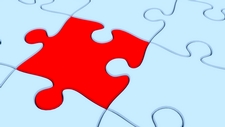Observing Patterns and Making Predictions

TEKS Objective
The student is expected to make predictions based on observable patterns.
Essential Understanding
The student knows that information and critical thinking, scientific problem solving, and the contributions of scientists are used in making decisions.
Science Background
The Science Process Skills: NARST (website) - Predicting outcomes based on patterns is a basic science skill. This article discusses the role of predicting within the context of all science process skills.
Signature Lesson
Sink or Float? Science NetLinks (website) - Students make and test predications about whether certain objects will sink or float, observe patterns and properties associated with sinking and floating, and make predictions about new objects, based on their findings and observations.
- Supporting Lessons
- Extensions
- Assessment Ideas
- Literature Connections
- Related
TEKS - Additional Resources
Supporting Lessons
A Matter of Pattern: Science NetLinks (website) - Not every snowflake is identical, but they share similar characteristics. Students create and predict patterns by making paper snowflakes. They learn that patterns may be predicted based on observation.
A Matter of Pattern
Science NetLinks, www.sciencenetlinks.com
Elaboration Lessons and Extensions
3…2…1…PUFF! NASA (PDF) - Students test several variables during this investigation, in which they construct small paper rockets, predict how far the rockets will travel, and “launch” the rockets by blowing air through a drinking straw.
Assessment Ideas
Assess students’ abilities to predict which objects will float or sink by challenging them to construct boats from recycled materials. Before conducting this assessment, be sure that students have an opportunity to test, observe and make notes about the buoyancy of different materials. With this information, students should be able to select appropriate materials to build a boat that floats.
Literature Connections
Geoffrey Groundhog Predicts the Weather. Koscielniak, Bruce (ISBN-13: 978-0395883983)
Estimating with People Who Predict. Noonan, D. (ISBN-13: 978-1429652438)
Additional Resources
Science Activities in Early Childhood Prepare for a Lifetime of Learning: National Science Teachers Association (website) - Children benefit from exposure to science situations in which they experience the world, describe what they see, collect and record data, ask questions, and make predictions based upon available information. Read more about how to help students become life long questioners.
TEKS Navigation
Grade 2
Need Assistance?
If you need help or have a question please use the links below to help resolve your problem.

Comments